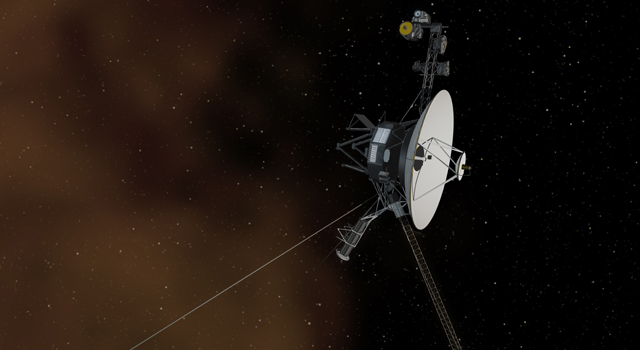Astronomers finally convinced of the release of Voyager 1 into interstellar space

Last year, the news was published on Habré that Voyager 1 entered the interstellar space. Nevertheless, some scientists still had doubts, but the other day it was proved that this spacecraft did indeed enter interstellar space.
The thing is that Voyager 1 was overtaken by the next wave of the “solar tsunami” generated by a powerful flash on the Sun. Interstellar outer space is filled with plasma, ionized gas. All this in a calm time can be imagined as a calm surface of the sea. But a flash on the Sun generates a kind of wave that generates "ripples" in the interstellar ocean. Voyager 1 sensors record all these disturbances, giving the Earth scientists an idea of the conditions prevailing in the region where the device is now located.
The plasma surrounding Voyager 1 is currently much denser (about 40 times) than it was within the solar system. This was first discovered in 2013, during a solar flare (the flare occurred in March 2012, but the “solar tsunami” overtook Voyager 1 only after a year and 1 month).
In addition, last year there was another surge in the Sun, which resulted in the formation of another wave that overtook Voyager 1 in March this year. The device again recorded a high density of the surrounding plasma.
Moreover, scientists recently discovered that at the end of 2012 there was another coronary ejection on the Sun, which at first went unnoticed. But after analyzing the previously obtained data, it turned out that even during the action of the wave from this ejection, the plasma around the apparatus again showed itself. In general, scientists now have compelling evidence that Voyager 1 is in interstellar space.
And here there is one interesting incident: Voyager 1 is located in interstellar space, but formally this device is still within the limits of the Solar system. It will be finally considered that the device left the solar system when it goes beyond the "sphere of influence" of comets surrounding the sun. Nevertheless, the apparatus left the heliosphere, and this happened back in 2012.
Now Voyager 1 can be called an unmanned starship, the first and so far the only one in the space fleet of mankind.
